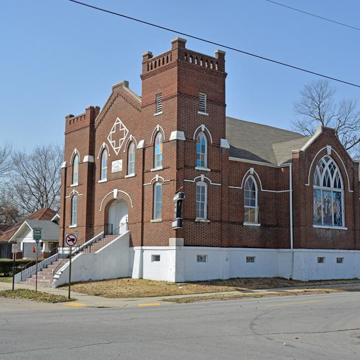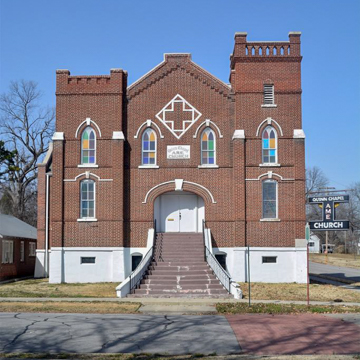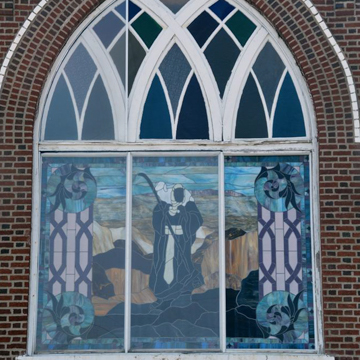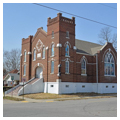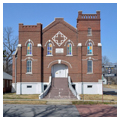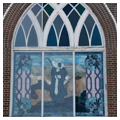This gable-fronted red brick church on a raised basement served a congregation established in 1864 that had met at several locations before this church was built. The cross-shaped church’s design is a blend of Romanesque and Gothic revivals with a broad round-arched entrance reached by a tall flight of stairs. Square towers of slightly different heights mark each corner of the facade, the larger one being a bell tower. The wall surfaces are highlighted in white with detailing that includes bands and keystones above the windows, a cross shape in the gable, and brick corbeling outlining the gable. The upper-level windows are composed of rectangles of stained glass. The builder was G. W. Hamans.
You are here
Quinn Chapel AME Church
If SAH Archipedia has been useful to you, please consider supporting it.
SAH Archipedia tells the story of the United States through its buildings, landscapes, and cities. This freely available resource empowers the public with authoritative knowledge that deepens their understanding and appreciation of the built environment. But the Society of Architectural Historians, which created SAH Archipedia with University of Virginia Press, needs your support to maintain the high-caliber research, writing, photography, cartography, editing, design, and programming that make SAH Archipedia a trusted online resource available to all who value the history of place, heritage tourism, and learning.


